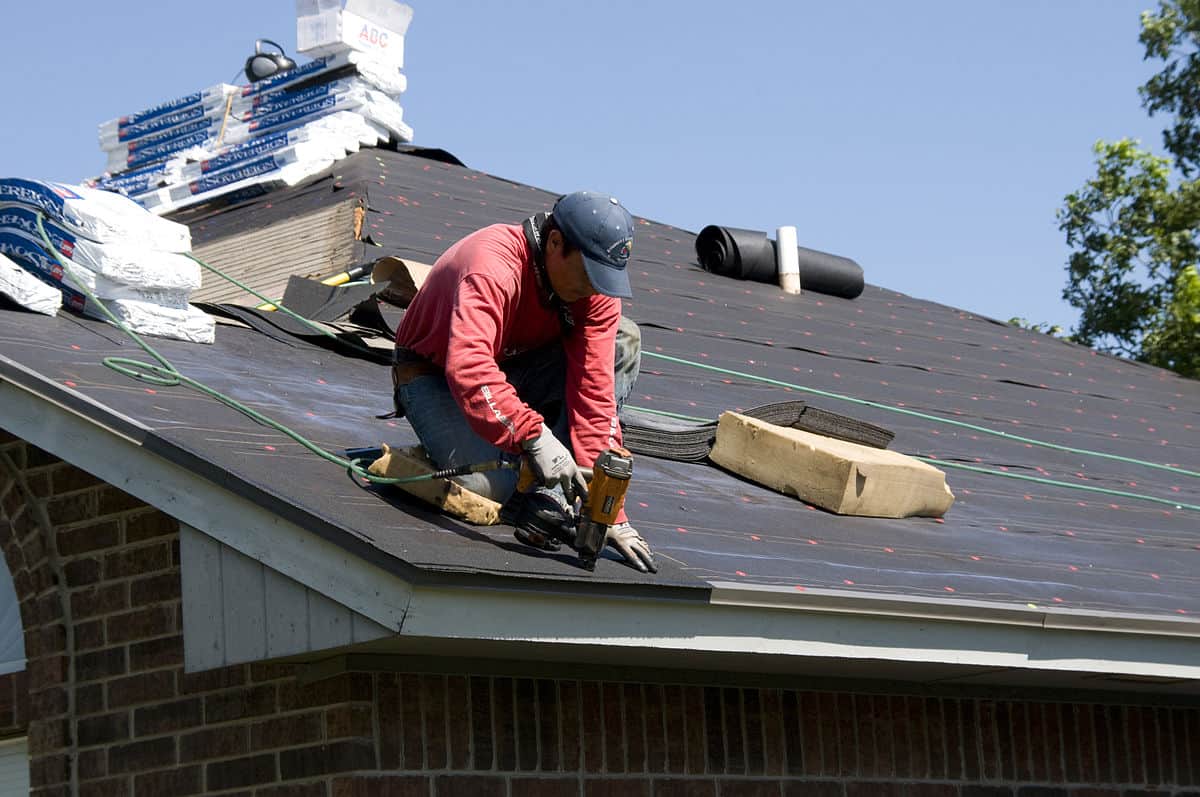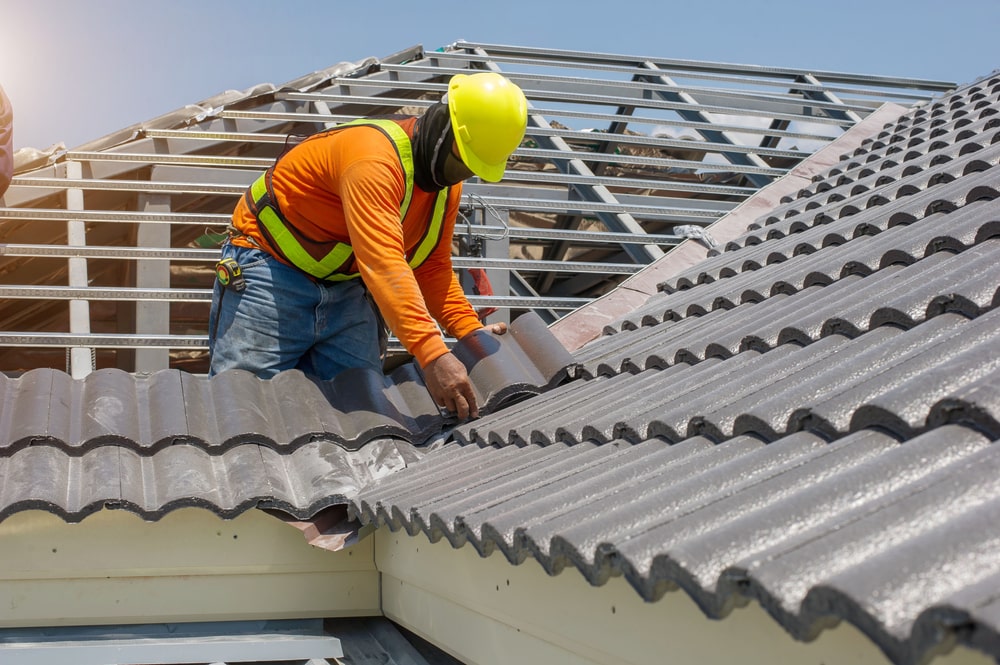The Advantages of Working with Gainesville FL Roofing Companies
The Advantages of Working with Gainesville FL Roofing Companies
Blog Article
Finest Practices for Ensuring Appropriate Roof Covering Air Flow
A balanced consumption and exhaust air vent ratio, typically 1:300, plays a crucial role, with consumption vents ideally placed at the reduced edge of the roofing for amazing air entry and exhaust vents at the height for cozy air departure. Keeping insulation away from vents is important to stop air flow limitation.
Understand Ventilation Essentials
Properly comprehending air flow essentials is crucial for guaranteeing the longevity and efficiency of roof. Efficient ventilation alleviates dampness accumulation and temperature extremes in the attic room, both of which can lead to substantial structural damages gradually. A well-ventilated roof covering aids in stopping usual concerns such as mold and mildew development, timber rot, and ice dams, which can endanger the stability of the roof materials and the underlying frameworks.
The primary objective of ventilation is to facilitate the movement of air, allowing for a consistent exchange between the outdoor and interior atmospheres. This balance is attained with a combination of consumption and exhaust vents that collaborate to keep ideal air movement. Consumption vents, typically located along the soffits or eaves, enable fresh air to go into the attic area, while exhaust vents, commonly situated at or near the roof covering ridge, allow warm, damp air to escape.
Trick elements influencing the efficiency of roofing ventilation consist of appropriate placement, ample sizing, and making certain that both intake and exhaust vents are unobstructed. Normal evaluation and maintenance are crucial to identify possible blockages, damage, or inadequacies in the air flow system, therefore safeguarding the roof covering's performance and toughness.
Sorts Of Roofing Vents
Roofing vents play a vital role in keeping reliable attic air flow and, by extension, the total health of the roof. Various kinds of roof covering vents are offered, each with unique benefits customized to specific roofing requirements. Ridge vents, for instance, are set up along the roofing system's optimal, permitting cozy, damp air to run away from the attic room. They supply constant air flow and mix perfectly with the roofline, making them both reliable and visually pleasing.

Soffit vents are installed under the eaves and operate in tandem with roof covering vents to make certain a well balanced intake and exhaust system. By permitting cooler air to get in from below, soffit vents facilitate the expulsion of warm air via upper vents. Gable vents, located on the outside wall surfaces of the attic, offer an additional efficient solution, especially in homes with saddleback roofs.
Evaluate Your Existing Ventilation

Following, consider the age and problem of your roof covering materials and air flow components. Older systems may not abide by existing building codes or may have deteriorated gradually, lowering their effectiveness. Conduct a detailed exam to identify any type of signs of damage, such as corrosion, damage, or voids that could jeopardize the system's efficiency.
Additionally, gauge the attic temperature and humidity degrees. High temperatures and humidity can suggest poor air flow.
Installment Best Practices
Effective setup of roof air flow systems is paramount for guaranteeing optimum efficiency and long life. Correct setup begins with comprehending the details ventilation requirements of the roof covering and the structure it covers. This entails computing the proper proportion of consumption to tire vents, usually sticking to the 1:300 policy, which states one square foot of air flow for every 300 square feet of attic room floor room.

The placement of vents is just as crucial. Intake vents must be visit this web-site installed at the roofing's lower edge, usually in the soffits, to enable cool air to get in. Exhaust vents, on the various other hand, must be set up near or at the roofing's peak to assist in the exit of cozy, damp air. This develops a natural air flow that assists keep temperature and dampness equilibrium within the attic area.
Seal all vent connections thoroughly to protect against air leaks and prospective water infiltration. Usage premium products and adhere to producer standards to make sure durability and performance. Additionally, integrating ridge vents with baffles can dramatically boost air movement performance by preventing wind-driven rain and snow from going into the attic room.
Eventually, exact installment of roof covering air flow systems minimizes possible concerns such as mold and mildew development, ice dams, and architectural damages, making certain the roof covering's integrity and the structure's total wellness.
Normal Upkeep Tips
Consistency in maintenance methods is fundamental to making certain the long-lasting efficiency of roof covering ventilation systems. Throughout these assessments, ensure that vents are cost-free of debris, nests, and various other obstructions that can hamper airflow.
Use a soft brush or a vacuum cleaner to get rid of dust and particles from consumption and exhaust vents. Be cautious not to harm the air vent screens or louvers throughout the procedure.
Correct insulation is equally vital. Make certain that attic room insulation does not block the vents, as this can seriously restrict air movement. If any kind of insulation has moved or resolved, reposition or change it to maintain an efficient obstacle.
Last but not least, change any damaged or missing elements immediately. Broken vents, broken roof shingles, or shabby blinking can all contribute to inadequate ventilation and must be resolved immediately. Regular maintenance ensures that the roofing ventilation system functions optimally, therefore expanding the lifespan of the roofing itself.
Verdict
Guaranteeing proper roof covering air flow is extremely important for maintaining the performance and longevity of a roof. Adherence to the 1:300 consumption and exhaust air vent ratio, coupled with the tactical placement of vents, is important. Normal semiannual examinations, particles cleaning, and making certain insulation does not obstruct air movement are vital practices. Applying these best practices will certainly promote a well-ventilated roof, therefore alleviating potential concerns associated to moisture accumulation and excessive warm, inevitably lengthening the roofing's lifespan.
A balanced intake and exhaust vent proportion, generally 1:300, plays an essential Full Article role, with intake vents preferably put at the lower side of the roof for amazing air top article entry and exhaust vents at the peak for warm air departure. Consumption vents, generally located along the eaves or soffits, allow fresh air to go into the attic room, while exhaust vents, frequently located at or near the roof covering ridge, allow hot, damp air to get away.
Soffit vents are mounted under the eaves and job in tandem with roofing vents to make certain a balanced intake and exhaust system. By permitting cooler air to get in from below, soffit vents facilitate the expulsion of hot air with upper vents. Adherence to the 1:300 intake and exhaust vent ratio, paired with the calculated positioning of vents, is crucial.
Report this page